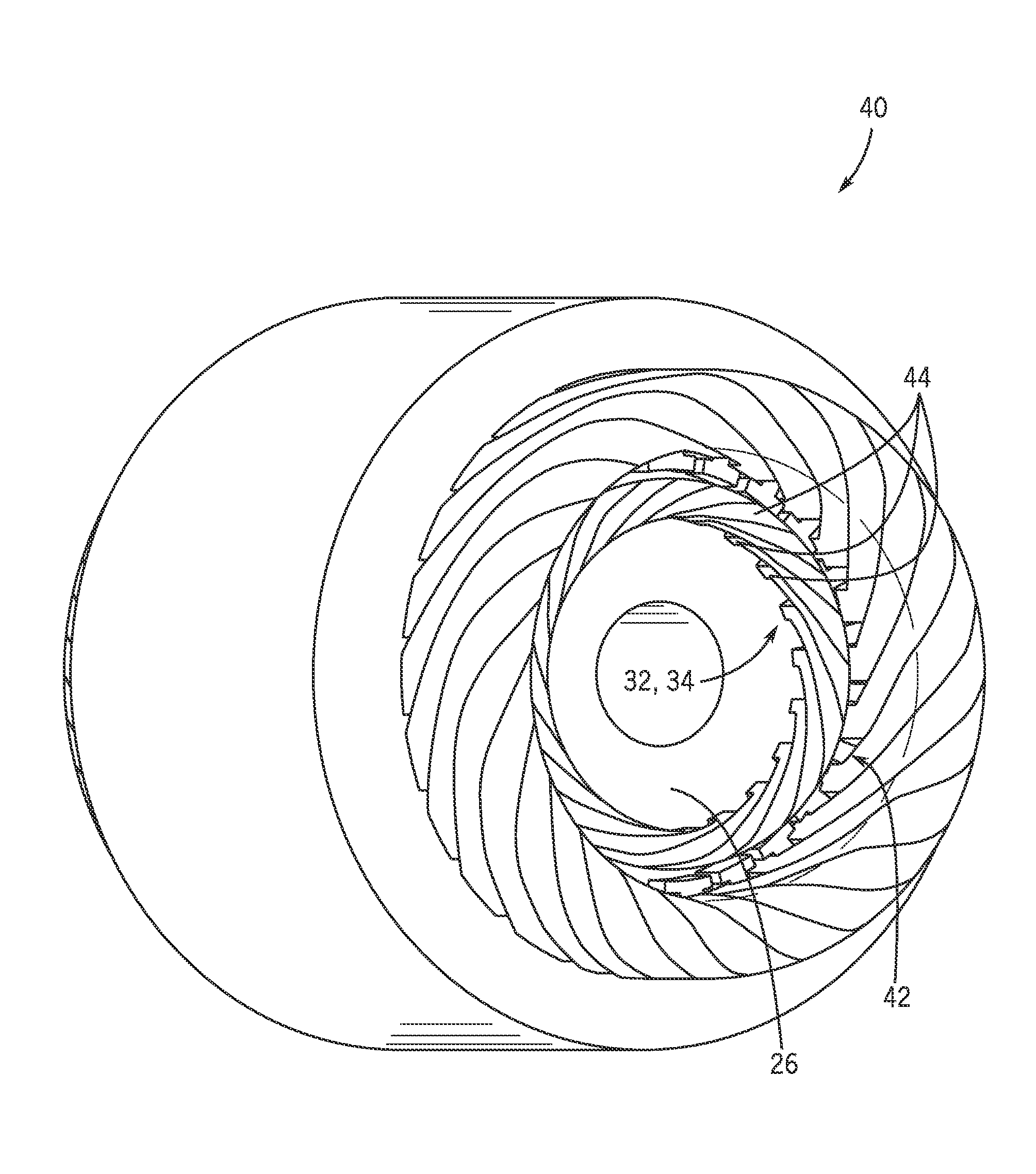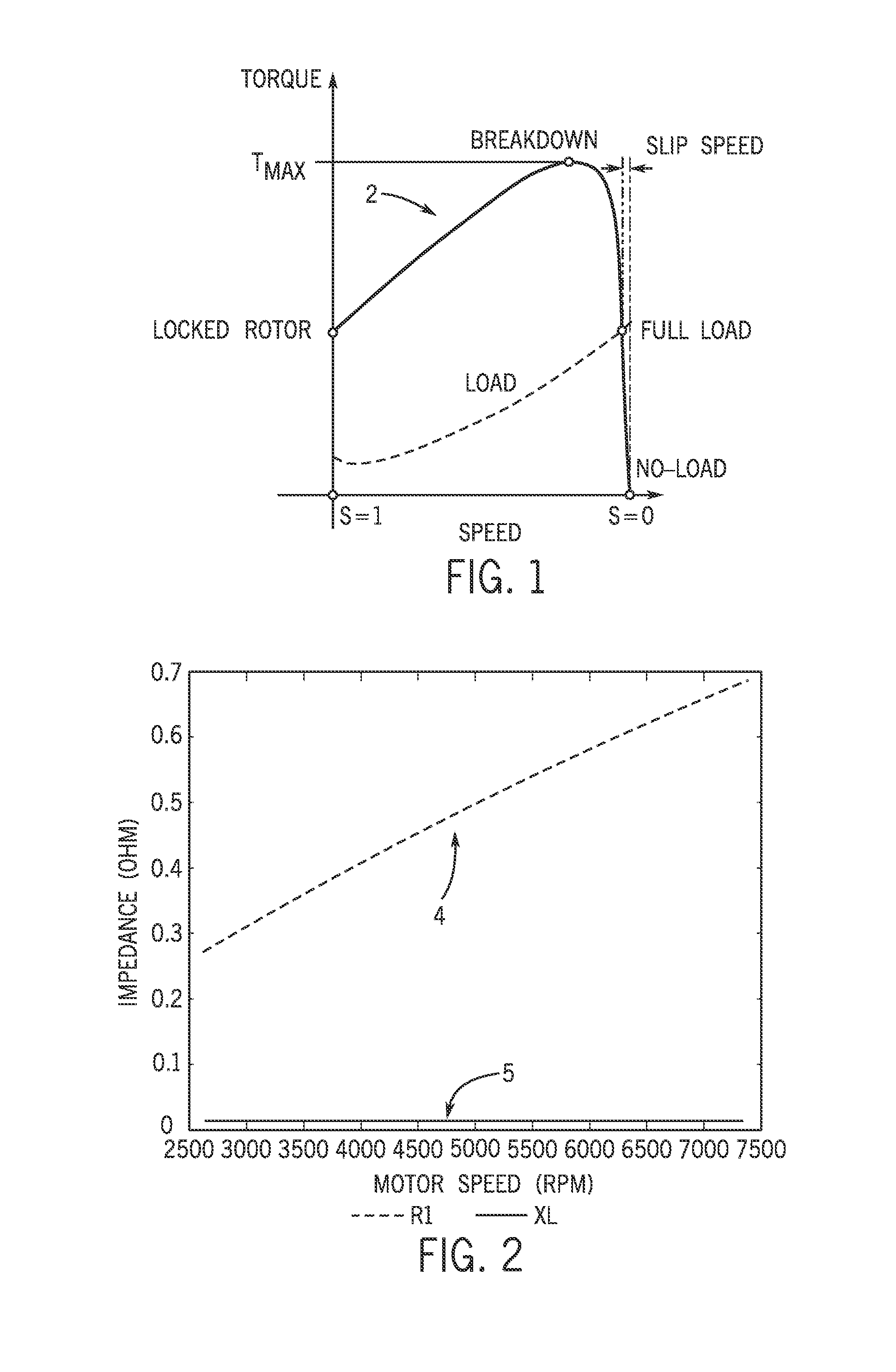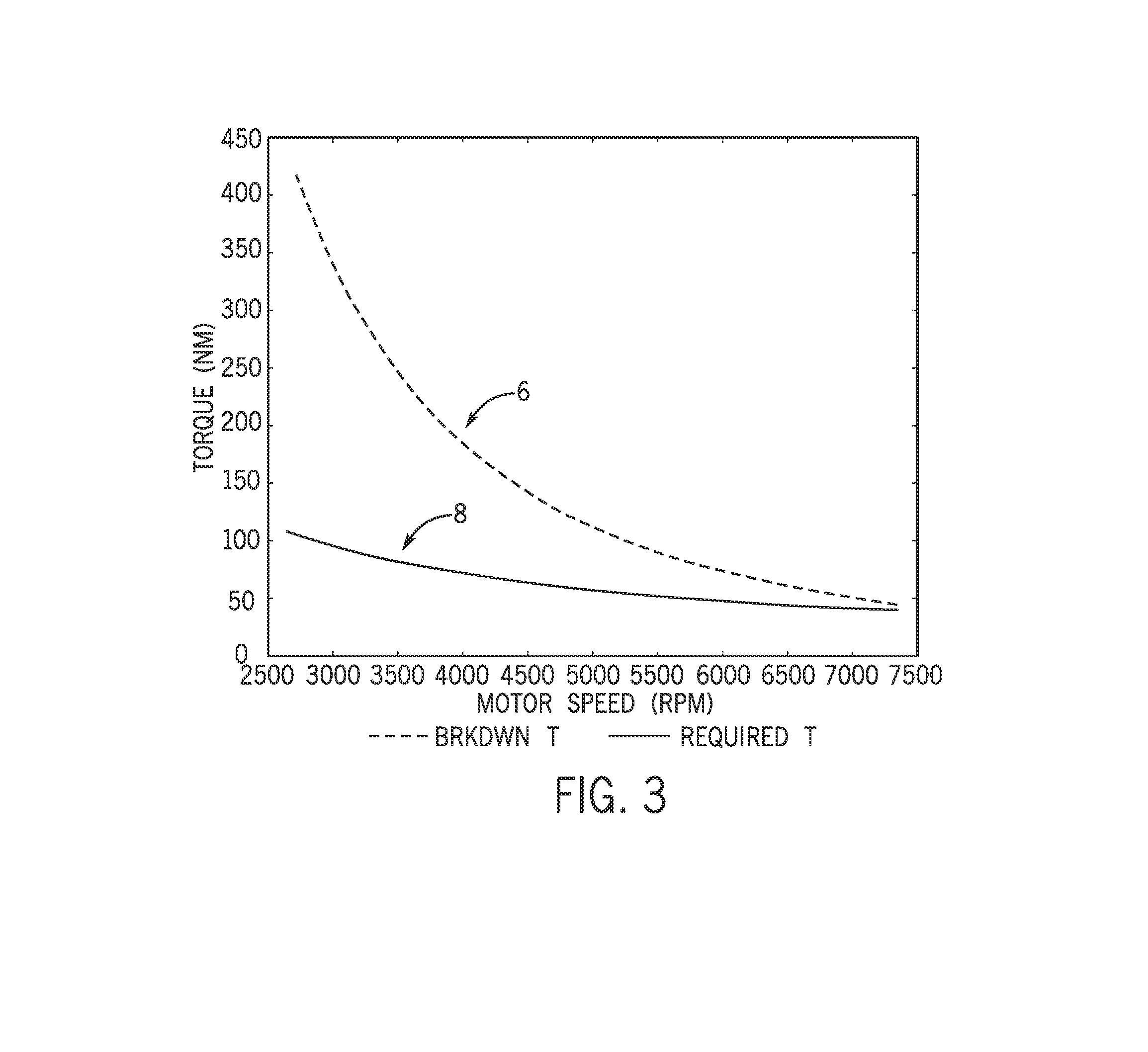Dual magnetic phase rotor laminations for induction machines
a technology of induction machine and phase rotor, which is applied in the direction of dynamo-electric machines, magnetic circuits characterised by magnetic materials, electrical apparatus, etc., can solve the problems of reducing the efficiency of the motor, sacrificing the efficiency or power density of the motor, and similar drawbacks to the motor performance, so as to reduce the leakage inductance
- Summary
- Abstract
- Description
- Claims
- Application Information
AI Technical Summary
Benefits of technology
Problems solved by technology
Method used
Image
Examples
Embodiment Construction
[0027]Referring to FIGS. 4-6, an AC induction machine 10 (i.e., induction motor), and respective components thereof, is illustrated according to an embodiment of the invention. Induction motor 10 includes a stator 12 and a rotor assembly 14 (i.e., “rotor”). Stator 12 further includes a stator core 16 and windings 18 wound on the stator core 16. The stator core 16 has a core main body 20 formed, for example, by stacking a large number of annular-shaped thin plates (not shown) made of electromagnetic steel and insulators (not shown) provided on axial end surfaces of the core main body. The stator core 16 is provided with a plurality of teeth 22 at a predetermined pitch along a circumferential direction thereof. According to an exemplary embodiment, windings 18 are wound on the respective teeth 22, with slots 24 formed between adjacent teeth 22 along the circumferential direction.
[0028]As shown in FIG. 4, rotor assembly 14 is constructed as a squirrel-cage type rotor that includes a ro...
PUM
 Login to View More
Login to View More Abstract
Description
Claims
Application Information
 Login to View More
Login to View More - R&D
- Intellectual Property
- Life Sciences
- Materials
- Tech Scout
- Unparalleled Data Quality
- Higher Quality Content
- 60% Fewer Hallucinations
Browse by: Latest US Patents, China's latest patents, Technical Efficacy Thesaurus, Application Domain, Technology Topic, Popular Technical Reports.
© 2025 PatSnap. All rights reserved.Legal|Privacy policy|Modern Slavery Act Transparency Statement|Sitemap|About US| Contact US: help@patsnap.com



